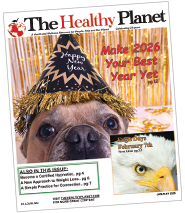By Dr. Doug Pernikoff, DVM
School is over and guess what, families like to start traveling ASAP!!! For pets not joining the adventure, I encourage pet owners to discuss one or more options with their veterinarian.
Commercials kennels can be great. Nonetheless, they can be costly and stressful to your beloved pets. It is important to visit the facility, along with your list of questions about their care protocol. Personally, I like to suggest that owners bring their own foods, to avoid or minimize tummy upsets resulting in diarrhea or worse. Some facilities allow pet blankets or toys. Be sure to mark them adequately, and sign off on leaving them there. I always state to pet owners that the Kennel owners and administrators may have the best intentions in mind, but the care of the pets often comes down to the responsible actions of the kennel cleaner instead. So, again, be sure you can be comfortable with the group you select. Other options would be to hire a pet sitter to either hold your Fido or Felix at their home; or, to allow them to stay or provide scheduled visits into the pet’s home. The latter is obviously, a better option for most animals who stress out at other facilities other than good ole home. Ask for testimonials in either case and make your best choice.
Always leave an information packet with any scenario, to include emergency numbers for you as pet owners; and, other information regarding veterinarian contact and pertinent patient health information.
Taking pets along on the trip is very common these days. Whether you are driving or flying, the big point is planning. Where will you stay? Does your hotel accommodate pets? Most cases, you will find a health certificate needed, which is provided by your own veterinarian, and offers relevant health and vaccine information. Pet owners should always carry that sort of information and other stuff as mentioned just prior. If flying, be sure to check with your airlines regarding special requirements needed; and the sort of crates required. Very small animals may fit under your seat; while others will be required to be placed in baggage holding or other related areas of the plane.
Don’t over feed in any case, and provide a stable water bowl if needed.
I always encourage pet owners to be sure their pets have adequate identification on board. Collars with tags and names are useful. Some pets have tattoos or better yet, a microchip that has been implanted under the skin by your veterinarian. While driving remember that frequent stops, say each 2-4 hours is appropriate for your pets (& for us, no doubt).
Be very careful about walking dogs around rest stops. Keep your pet very secure from escape or worse yet, from theft. On the other hand, please note that heat can be a deadly factor. Temperatures in the 70’s, for over ten minutes in a partially closed car, can be dangerous. Heat stroke may only take minutes to develop to a point of serious concern.
It would be a great idea to have a list of veterinary emergency facilities along your travel path, just in case. Again, I encourage minimal feeding of solids and intermittent water breaks.
Another issue would regard securing your pets in the car as you travel. Maybe a seat belt device, crating or if sitting on your lap, do it cautiously. Some animals require a mild sedative or other pharmaceuticals like Dramamine or Benadryl to help with nausea and anxiety. Your vet can counsel you to other options with true sedatives.
Bottom line is to PLAN WELL and be cautious. This is the best way to travel with your pets and be sure to have a great vacation adventure.
Fondly, Dr. Doug Pernikoff
Clarkson-Wilson Veterinary Clinic
Vet Pet Rescue
www.clarksonwilsonvet.com


